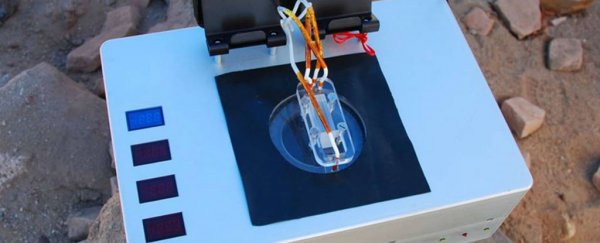NASA has been showing off what it calls a "chemical laptop" - a small, portable laboratory that could be used in the search for signs of life on other planets. Buggies and rovers are fine for getting across the terrain of alien worlds, but when some serious soil analysis needs to be done, this is the device for the job.
The chemical laptop is being developed by researchers at NASA's Jet Propulsion Laboratory (JPL) in Pasadena, California. It detects amino acids and fatty acids - what we understand to be the tell-tale signs of life - in liquid samples, using a coffee machine-like process and hot water to tease out the organic material.
Once it eventually becomes part of a mission, the machine will be "the most sensitive device of its kind to leave Earth", according to the team working on it.
"Our device is a chemical analyser that can be reprogrammed like a laptop to perform different functions," said Fernanda Mora, one of the JPL technologists involved in developing the instrument. "As on a regular laptop, we have different apps for different analyses."
The Chemical Laptop applies a fluorescent dye to its samples, which can attach itself to either amino or fatty acids. These acids are the building blocks of proteins and cell membranes, but they can be found in non-living sources as well as living ones. The machine's ultimate trick will be to tell the difference by studying carbon chain lengths.
After a microchip has separated the amino acids and fatty acids, a laser is then used to identify what's inside the sample.
Despite all of this advanced scientific equipment, the device isn't much bigger than a standard laptop, although you probably wouldn't want to lug it around on a train.
There's some way still to go before the chemical laptop gets cleared for a mission in deep space, but it's already been put through its paces on board a rover in a Mars Yard at the Jet Propulsion Laboratory: it was asked to analyse a sample of 'green rust' in conditions similar to those that would be found on the Red Planet.
Since then, the NASA team has been working to increase the accuracy and sensitivity of the unit, which could potentially be used for environmental projects on Earth as well as on other planets. "This was the first time we showed the instrument works outside of the laboratory setting," says Mora. "This is the first step toward demonstrating a totally portable and automated instrument that can operate in the field."
